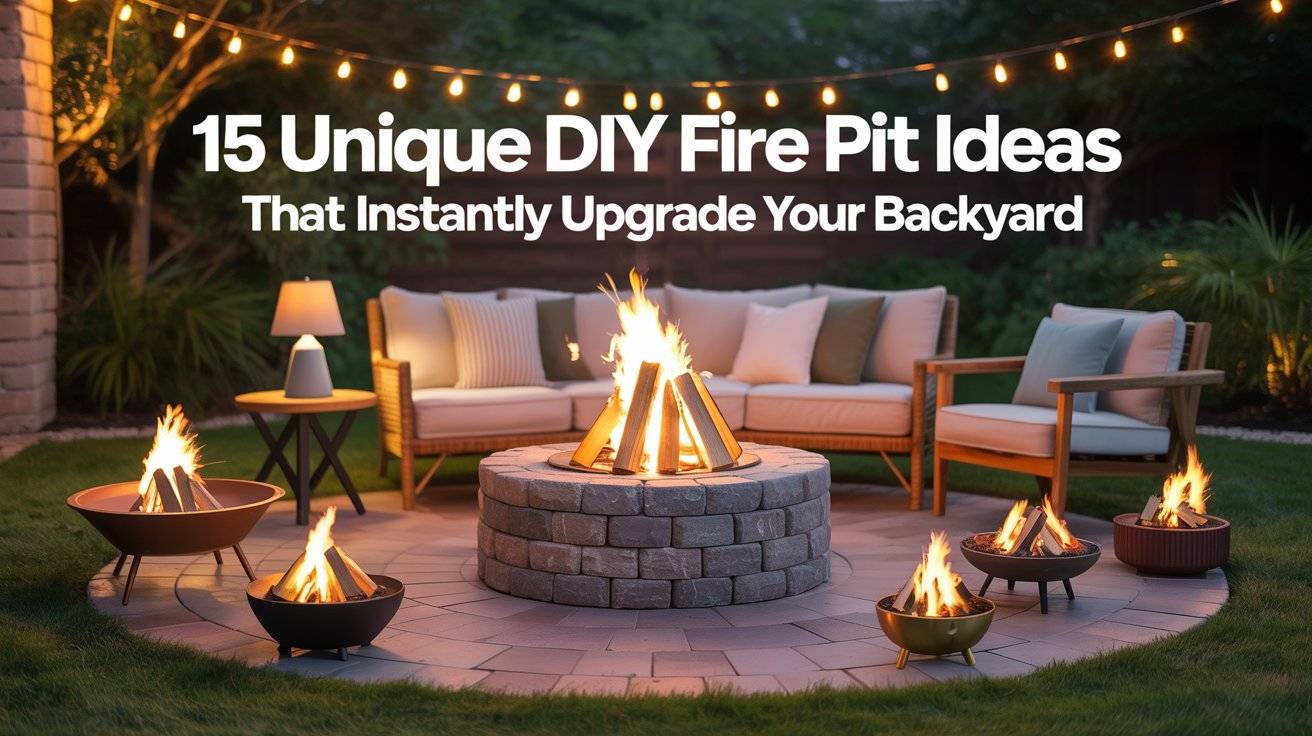A fire pit is more than just a place to burn wood. It’s where stories are shared, meals are roasted, and quiet evenings turn into lasting memories. And the good news? You don’t have to hire a contractor or spend a fortune to have one in your yard.
DIY fire pits come in all shapes and sizes from stone-lined circles to creative upcycled designs. Whether you have a small patio or a wide-open lawn, there’s a fire pit style that can work for you. Most of these can be built in a weekend with tools you already have or can easily borrow. Some cost under $100; others take a little more time and effort but all are designed to be realistic, doable, and worth the work.
Here are 15 unique DIY fire pit ideas to try. Each one offers a fresh take on what a fire pit can be, using materials that are often easy to find at local hardware stores, garden centers, or even your own garage.
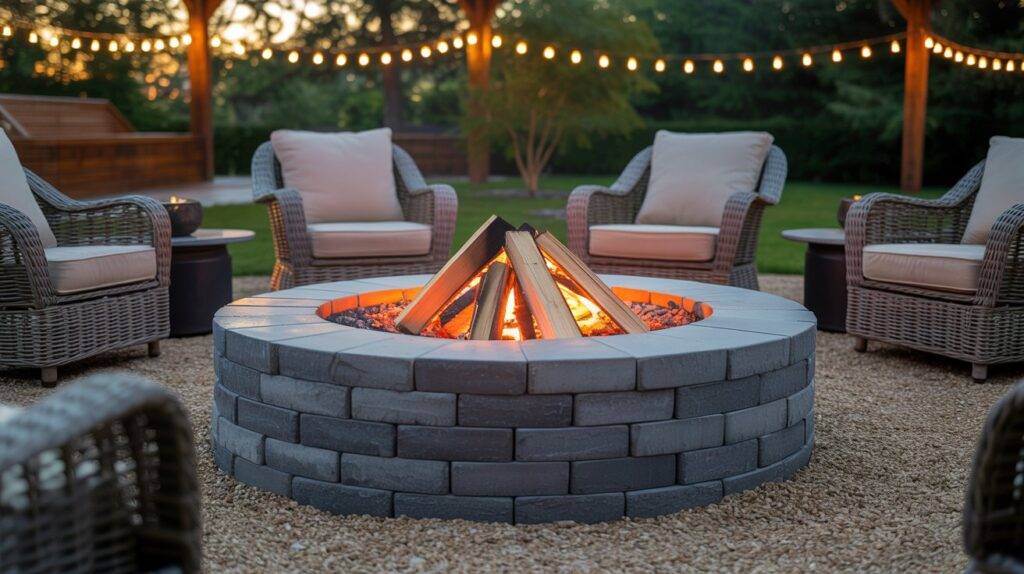
1. Simple Stone Circle With Gravel Base
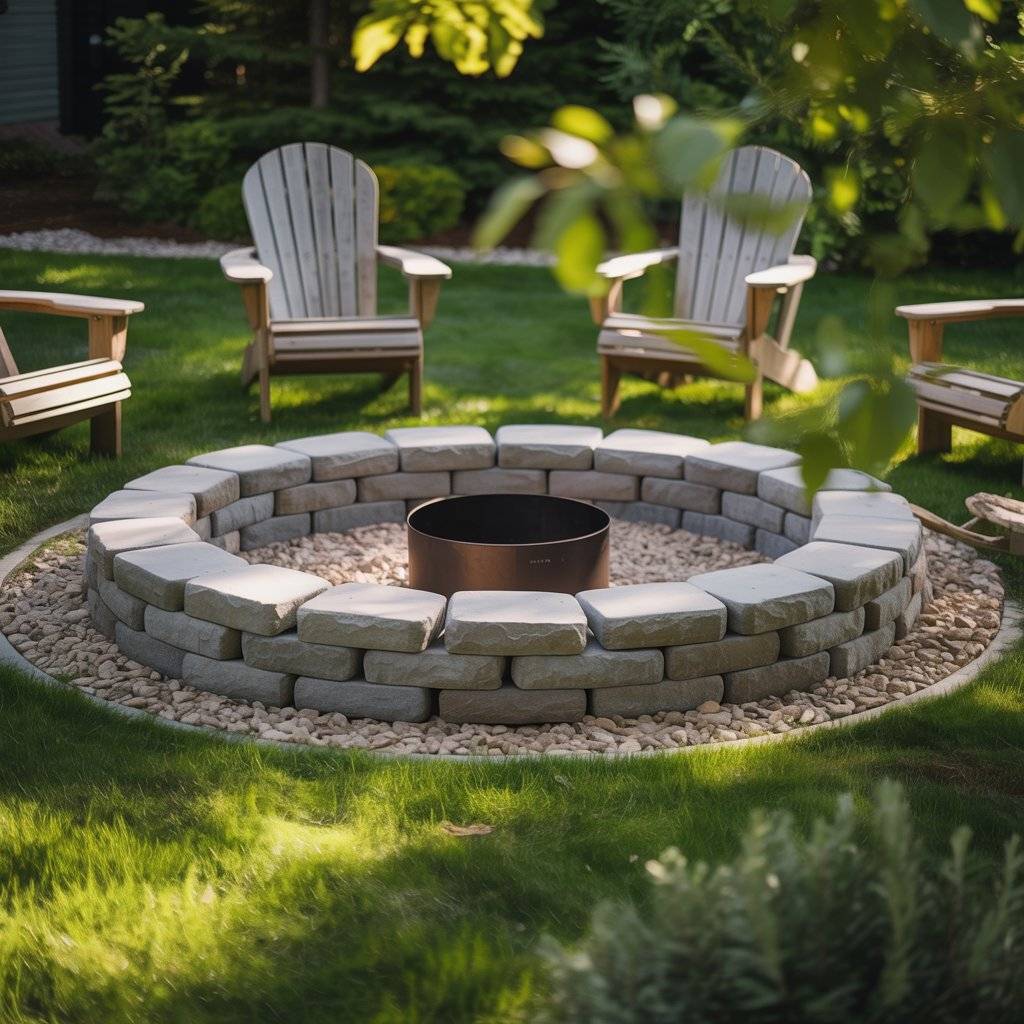
This is one of the easiest fire pit designs to build and it still looks great. Start by marking a circle on your lawn with spray paint. Dig down a few inches and fill the space with compacted gravel for drainage and stability.
Then stack fire-safe retaining wall blocks or pavers in a ring. Use a fire ring insert in the center for safety and durability. This design blends well with almost any backyard style and can be customized with different stone colors or seating around it. It’s low-cost, clean, and works in both small and large spaces.
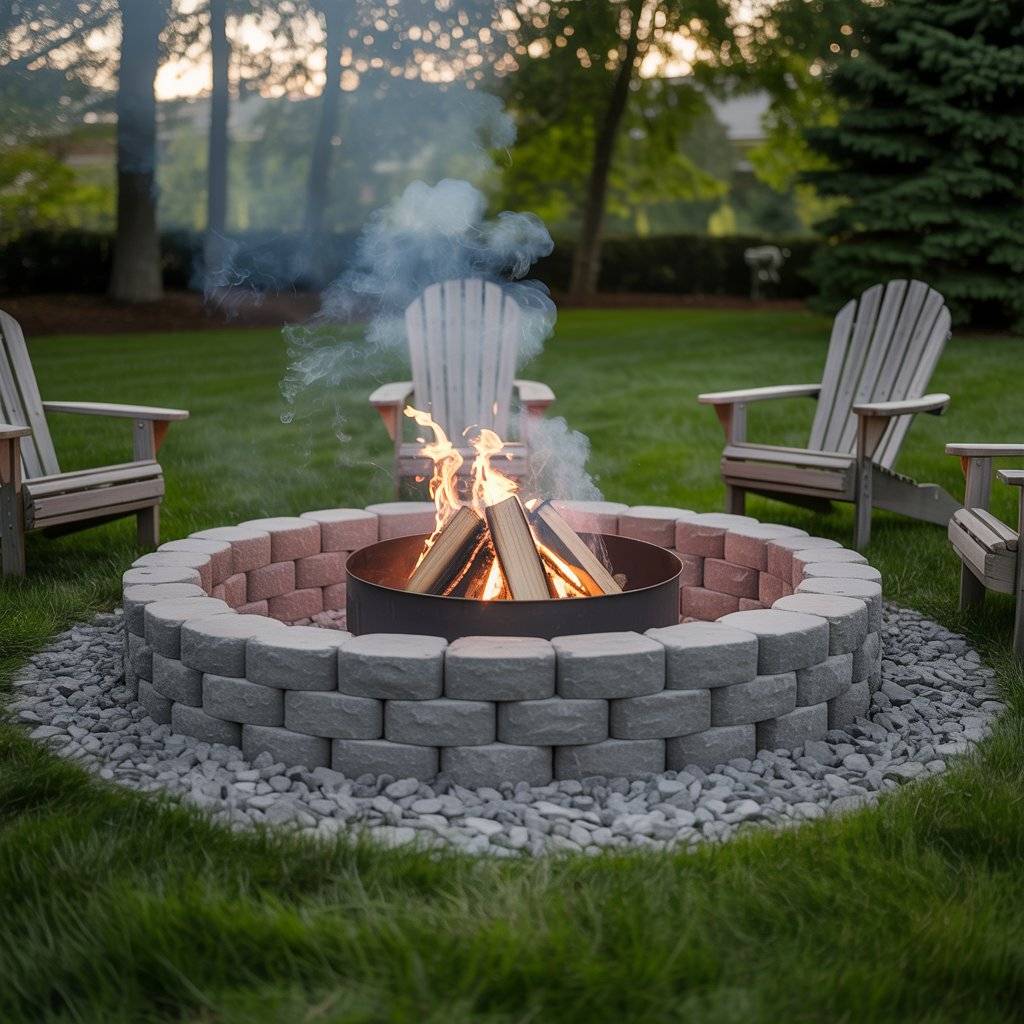
2. Washer Drum Fire Pit
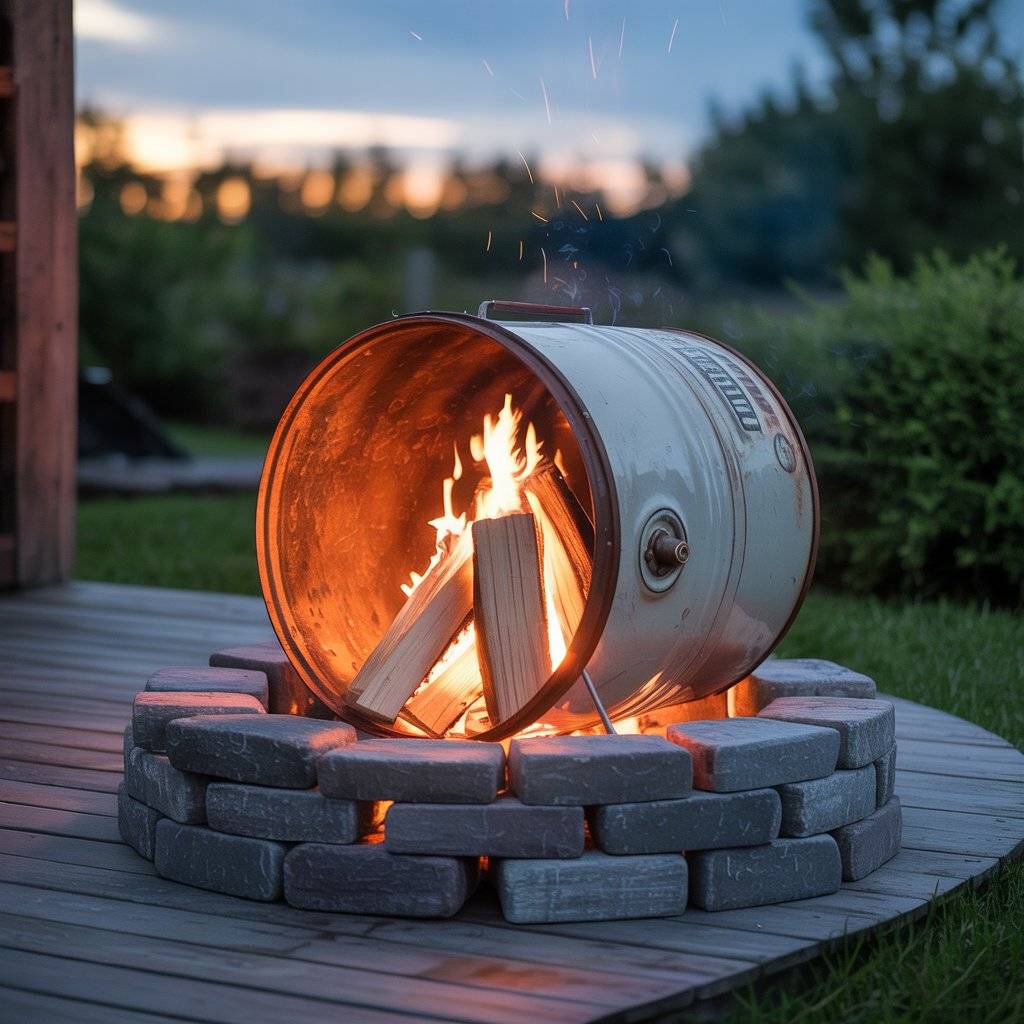
Old washing machine drums can be turned into clever fire pits. They’re made of heat-resistant metal, already ventilated with holes, and the shape is ideal. All you need is a base like bricks, pavers, or a metal stand to lift it off the ground. These drums are often free or cheap at appliance stores or scrapyards.
Once cleaned, they give off great light patterns through the holes, making for a cozy nighttime glow. It’s a great way to reuse something and get a portable fire feature that feels surprisingly modern.

3. Sunken Concrete Block Pit
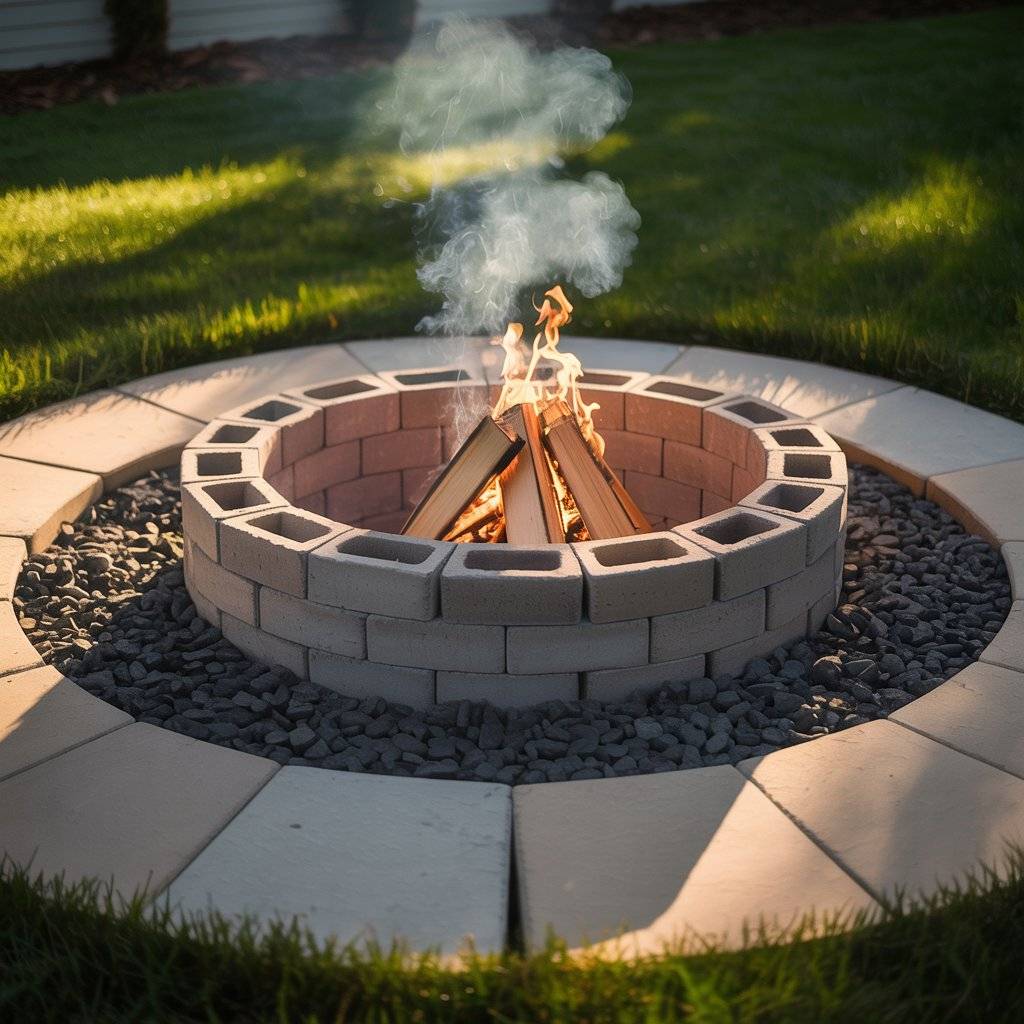
This design gives your fire pit a permanent, built-in feel. Start by digging a shallow pit and lining it with gravel. Then use concrete blocks or cinderblocks to shape the walls square, round, or octagonal depending on what you like. Because it’s slightly below ground, it helps block wind and keeps the fire contained.
Add a metal insert if you want a cleaner burn or plan to use it often. Top the blocks with flat stones or pavers to finish the look. This is great for backyards with open space and a clean, structured layout.
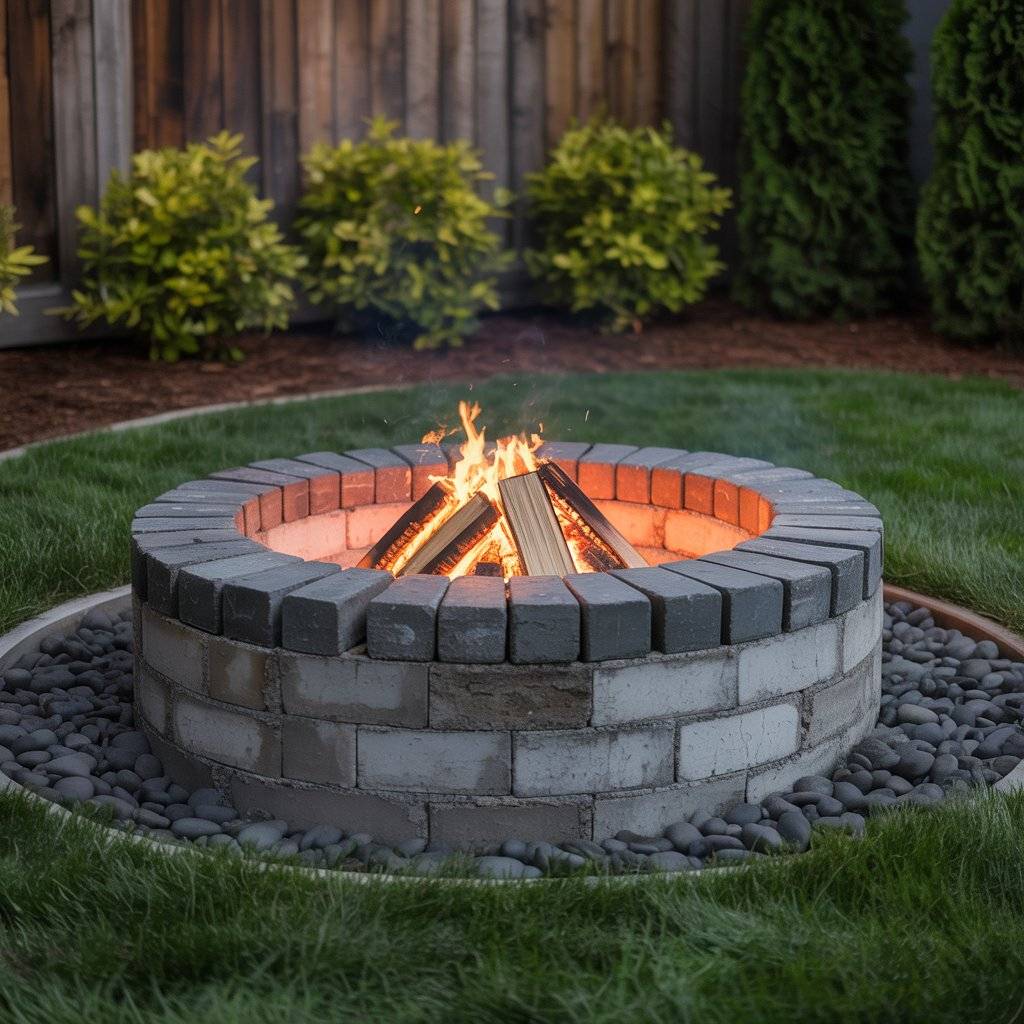
4. Fire Pit Table With Paver Top
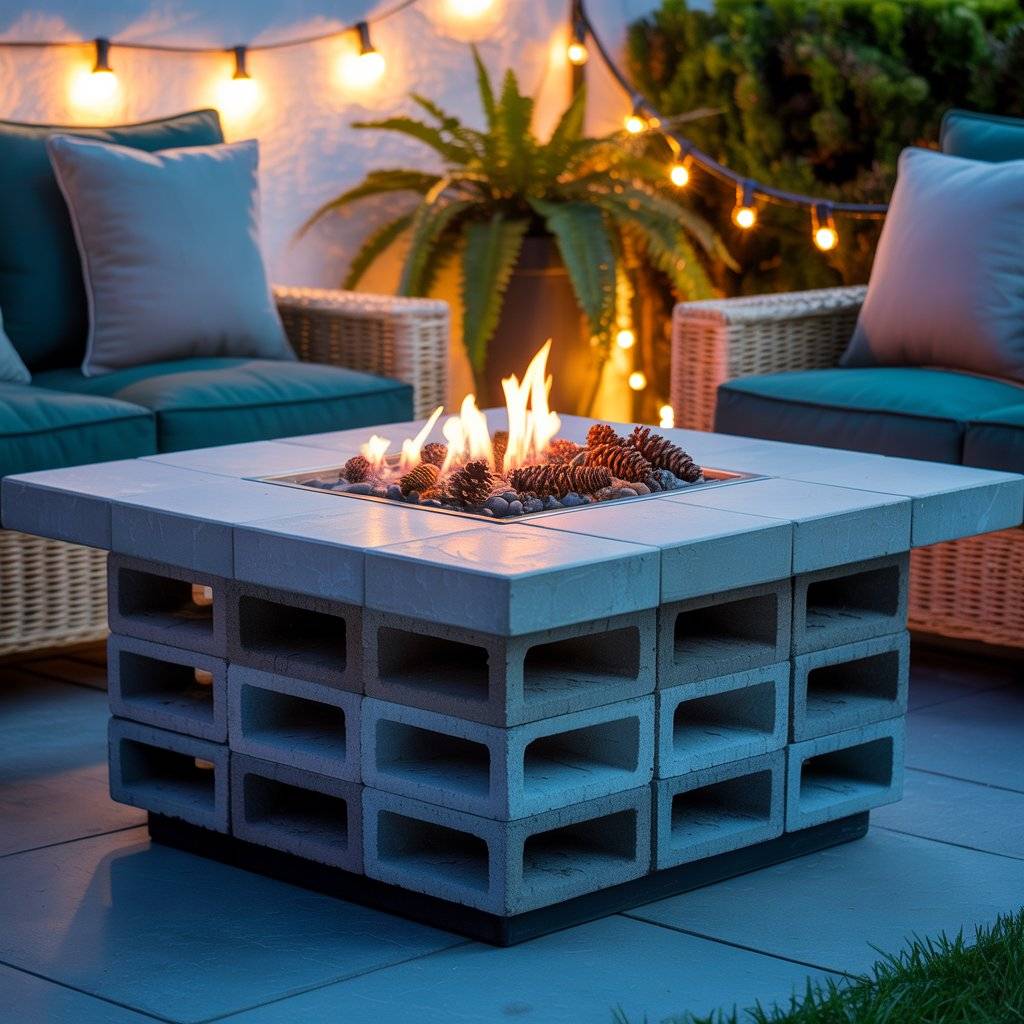
This idea combines a fire pit with a coffee table feel. Using cinderblocks or fire bricks as a base, build a square or rectangular shape, then top it with a flat surface of stone pavers, concrete, or heat-resistant tiles.
Leave the center open for the fire or insert a fire bowl. This design is ideal for patios where you want a more modern or polished look. The top edges double as space for drinks, food, or resting your feet on cool nights.
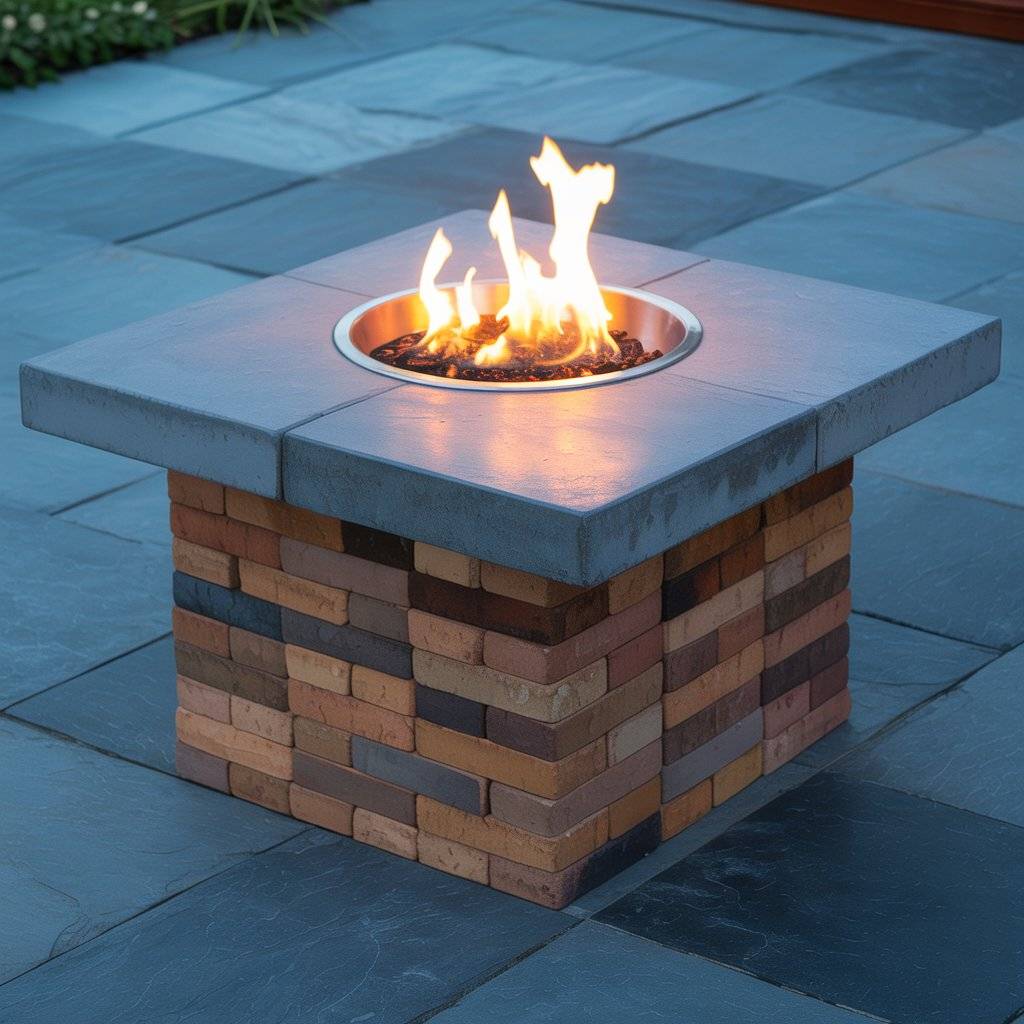
5. Rustic Steel Ring Pit With Log Seating
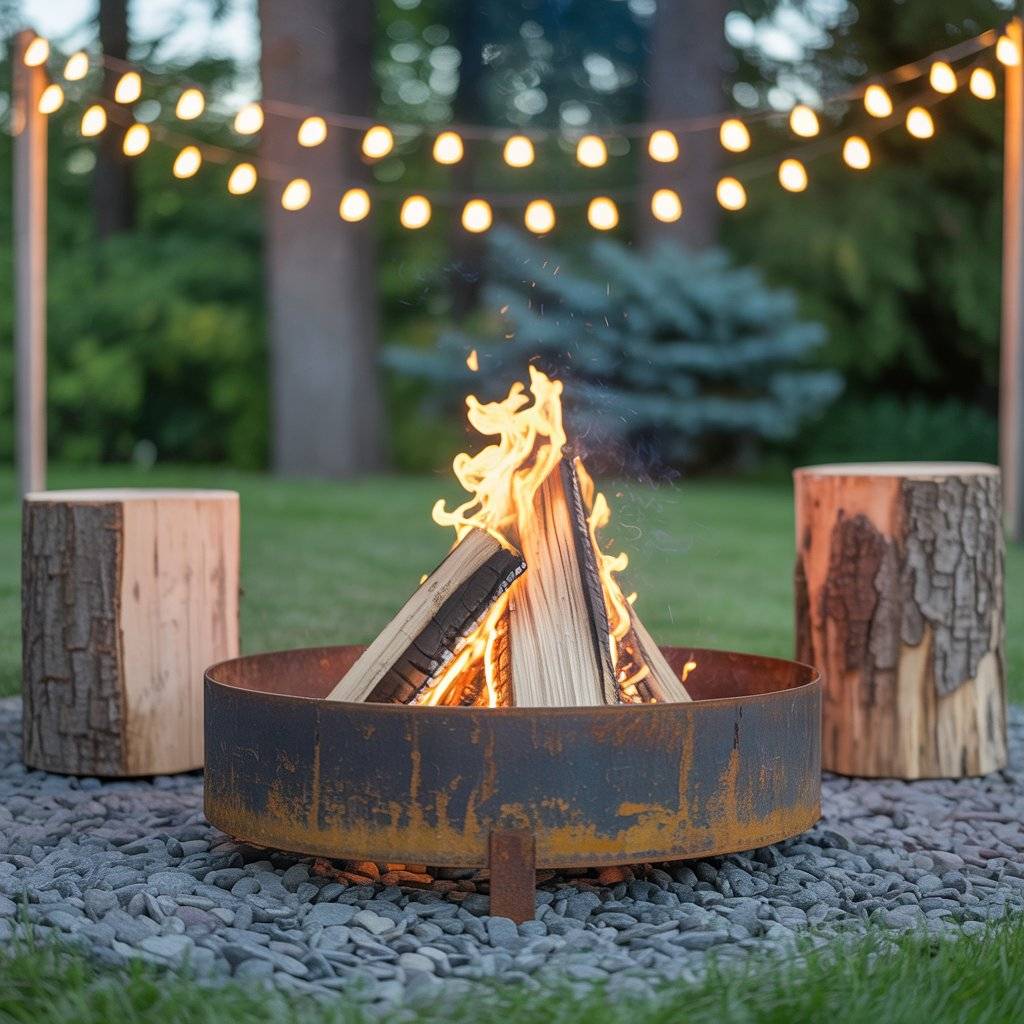
Sometimes simple works best. A heavy-duty steel fire ring, set directly into a gravel base, can make a great outdoor feature. Surround it with natural log stools or short tree trunk slices for seating. This rustic setup fits well in wooded or natural-style yards.
Add a few string lights or lanterns around the area for a soft glow. Steel rings are available at most home stores and help keep the fire safely contained while giving the pit a cleaner shape.
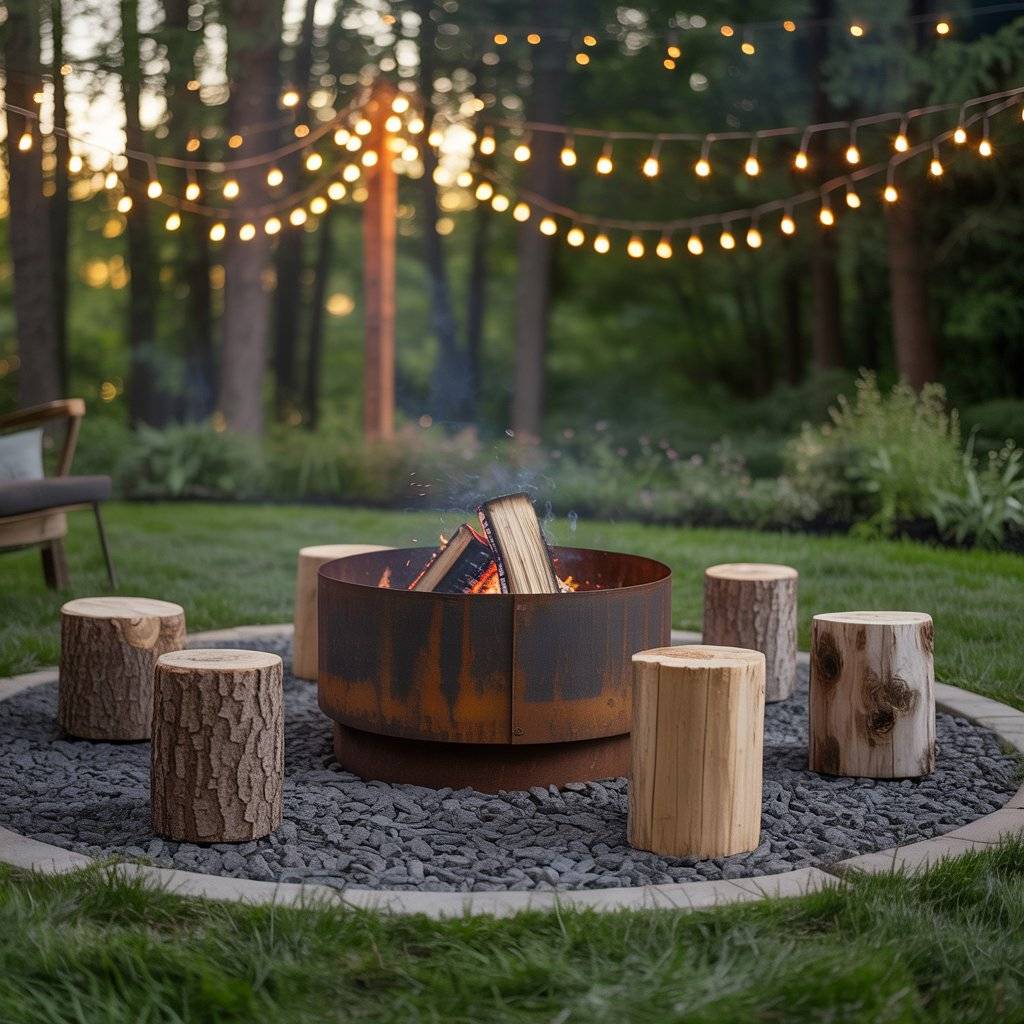
6. Stacked Retaining Wall Block Pit With Bench
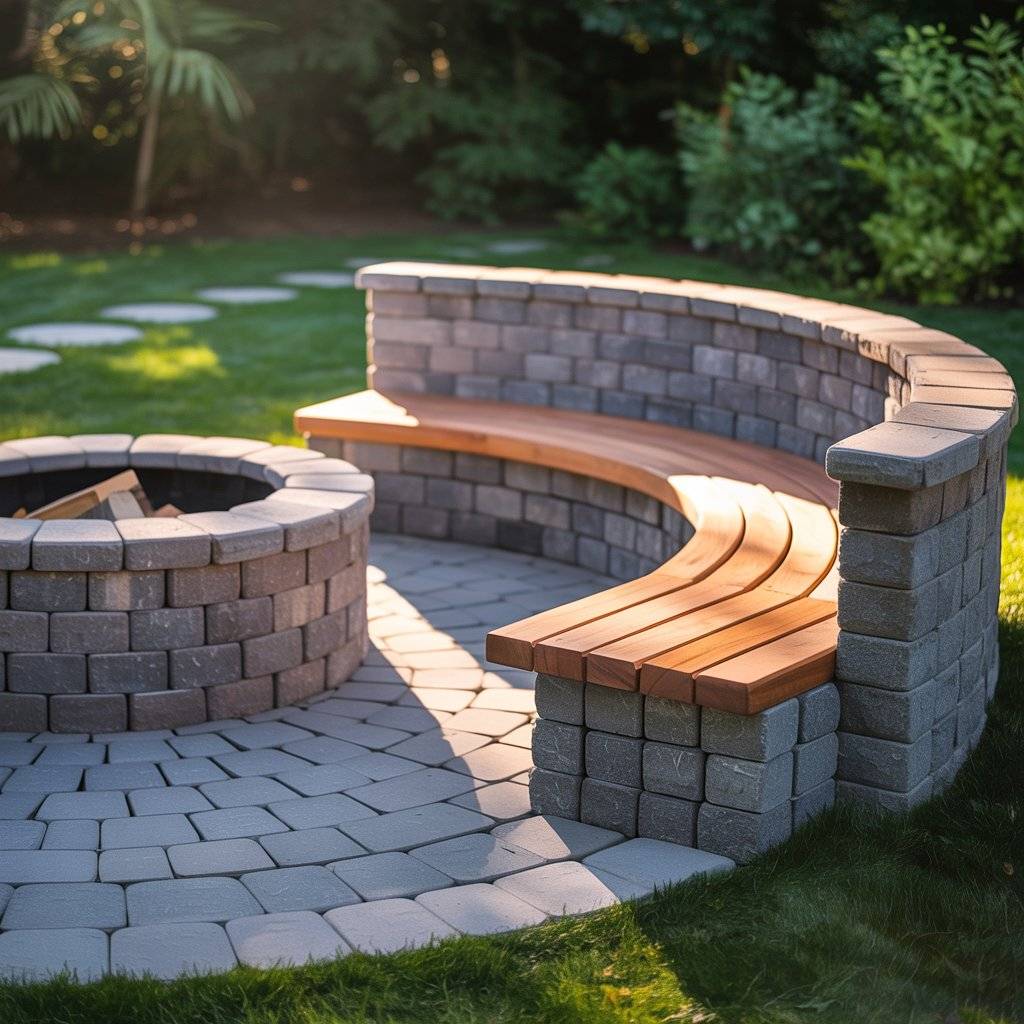
This version builds on the basic block pit by adding a built-in bench. First, build the fire pit as usual using curved or straight retaining wall blocks. Then create a small half-circle or L-shaped bench a few feet away, using the same block style.
Top it with wood slats or stone caps for seating. The matching materials give the area a unified look and make it feel more intentional. This is a great weekend project that adds both form and function.
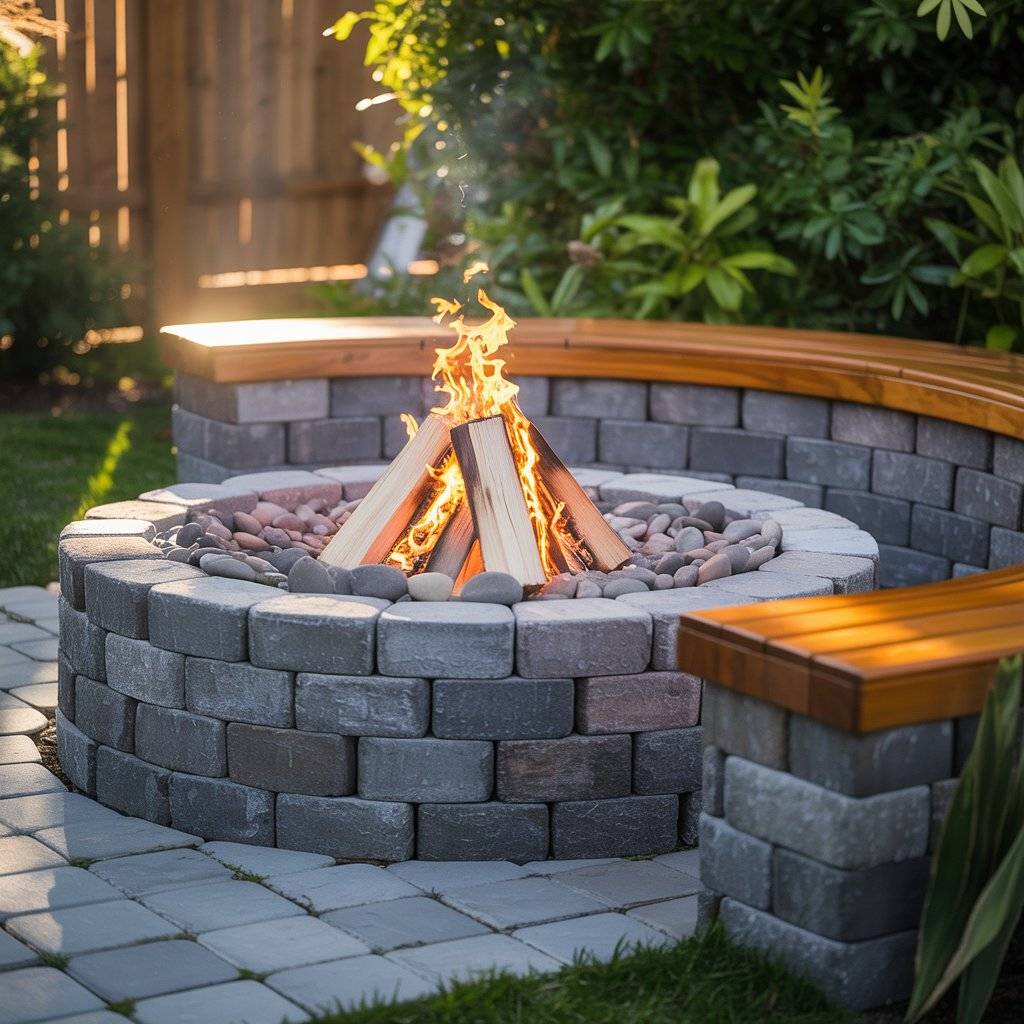
7. Gravel Pit With Metal Bowl Insert
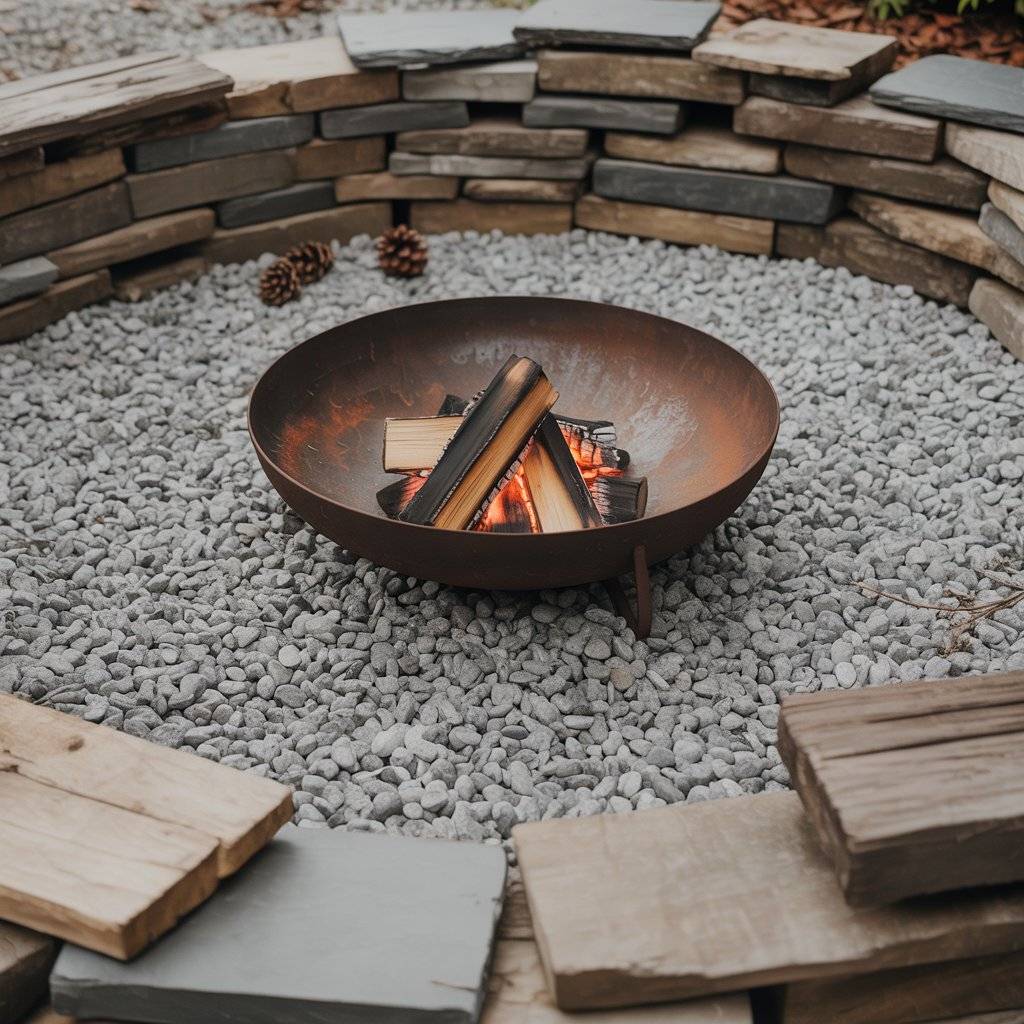
A metal fire bowl set into a gravel base is one of the fastest and most flexible DIY fire pit ideas. Simply level a space, pour in some pea gravel or crushed stone, and place the bowl in the center. You can add a border with bricks, stones, or low pavers to keep things tidy.
This design works well for renters or anyone who wants a portable setup without digging or building. The metal bowl helps focus the heat and keeps ash contained.

8. Cinderblock U-Shaped Fire Pit Lounge
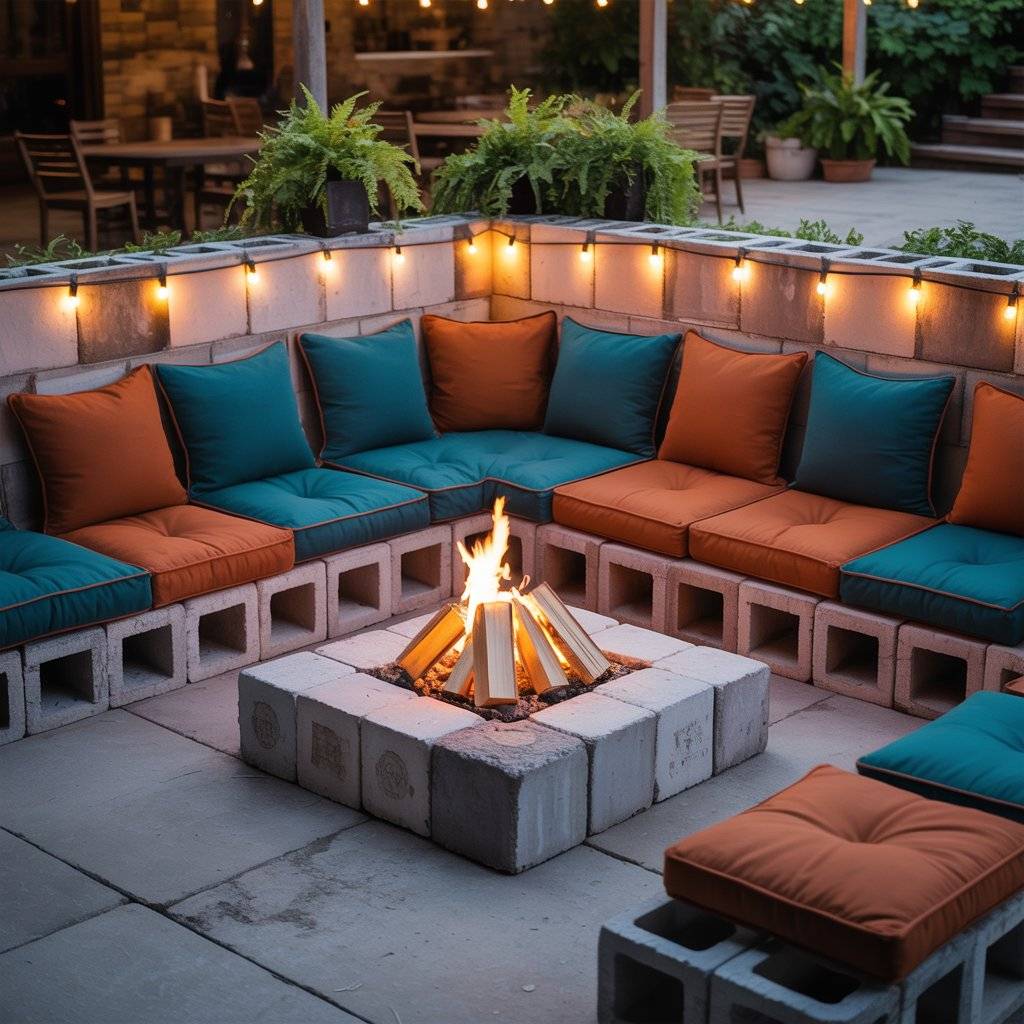
This design goes beyond the pit itself and creates a built-in conversation space. Use cinderblocks to form a U-shape wall that acts as a low bench around a central fire pit. Add cushions or pads on top for comfort.
The pit can be built in the center with stone or a metal ring. This setup is ideal for social spaces, giving people a place to gather that feels cohesive and cozy. It’s more work but pays off in comfort and visual impact.
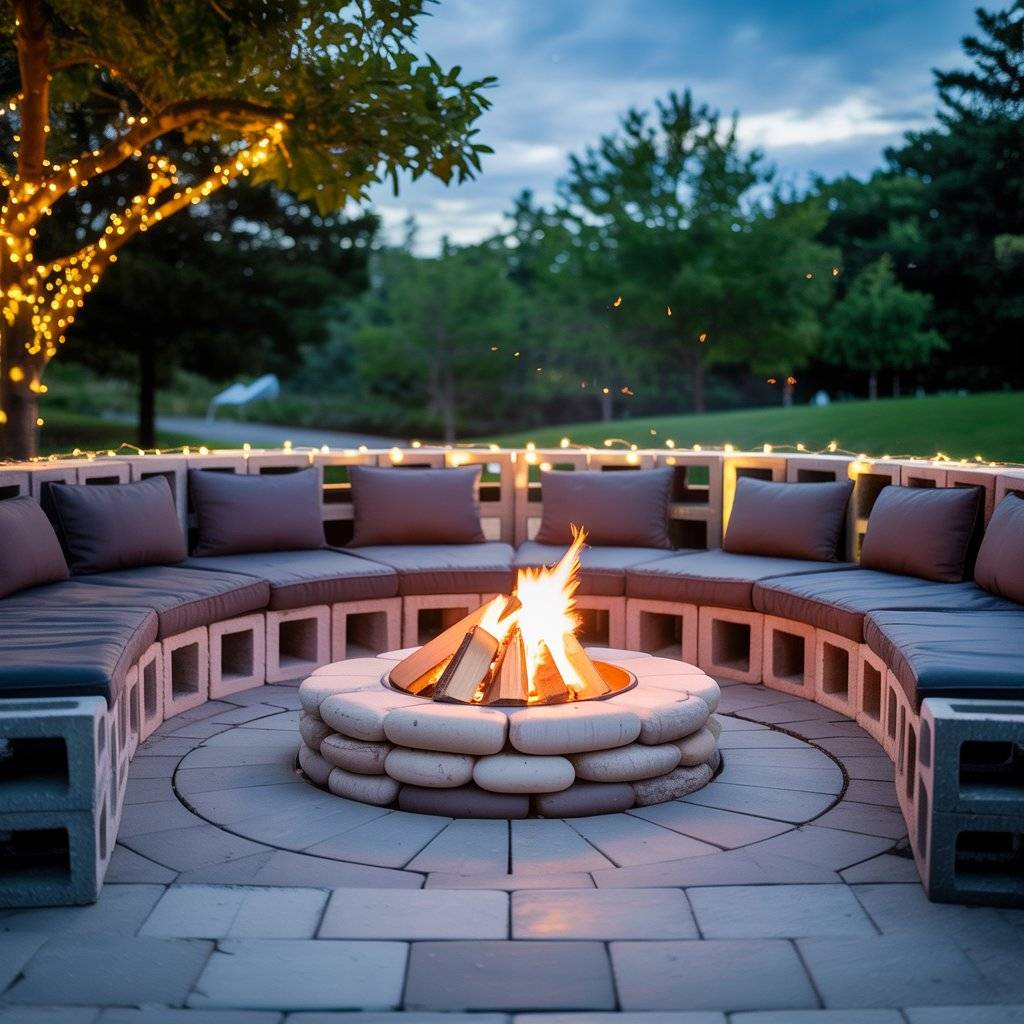
9. DIY Brick Fire Pit With Herringbone Pattern
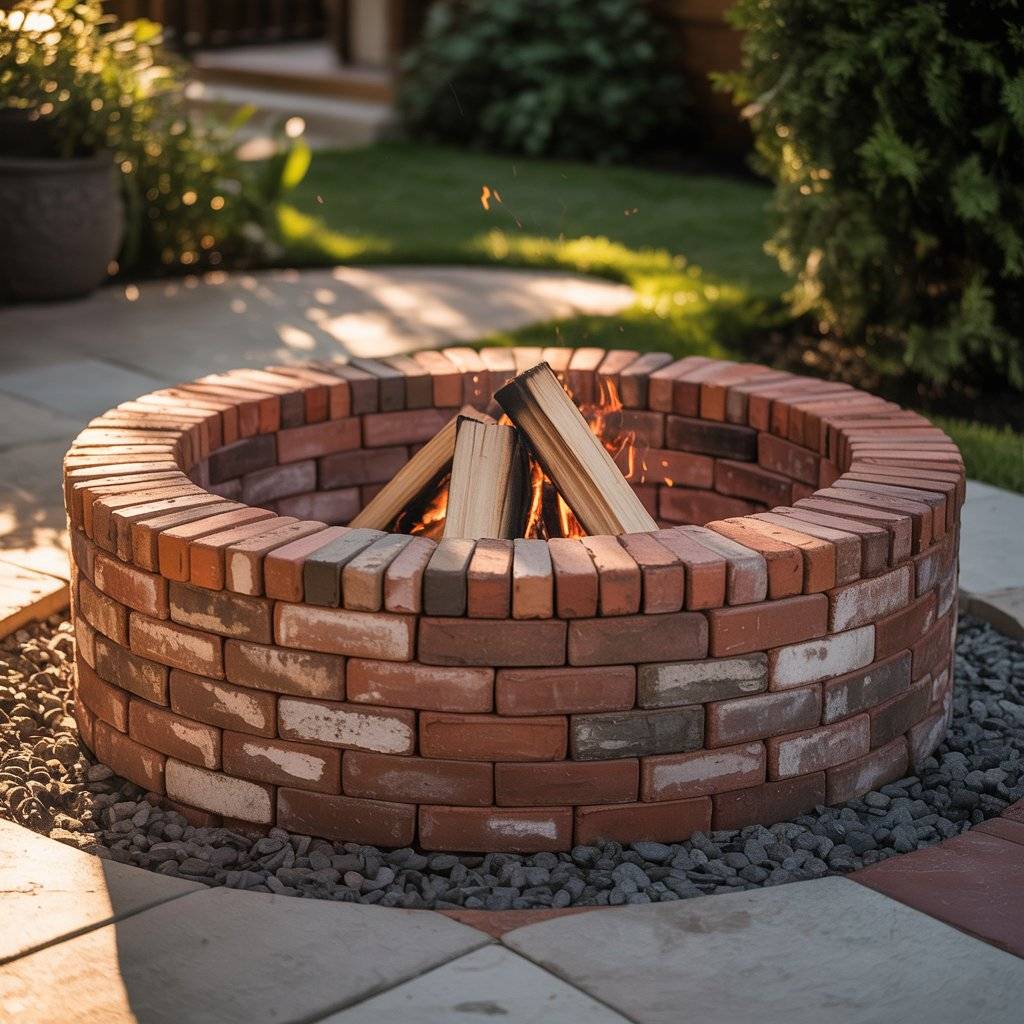
Brick gives your fire pit a classic look, especially when laid in a herringbone or basketweave pattern. You can start by laying a compacted gravel base, then stack fire bricks in a round or square shape.
For extra flair, lay the bricks on the top surface in a pattern this becomes the rim of the pit. Brick pits retain heat well and are very durable. Use mortar or high-heat adhesive for a more permanent build. This project adds old-world charm with modern function.
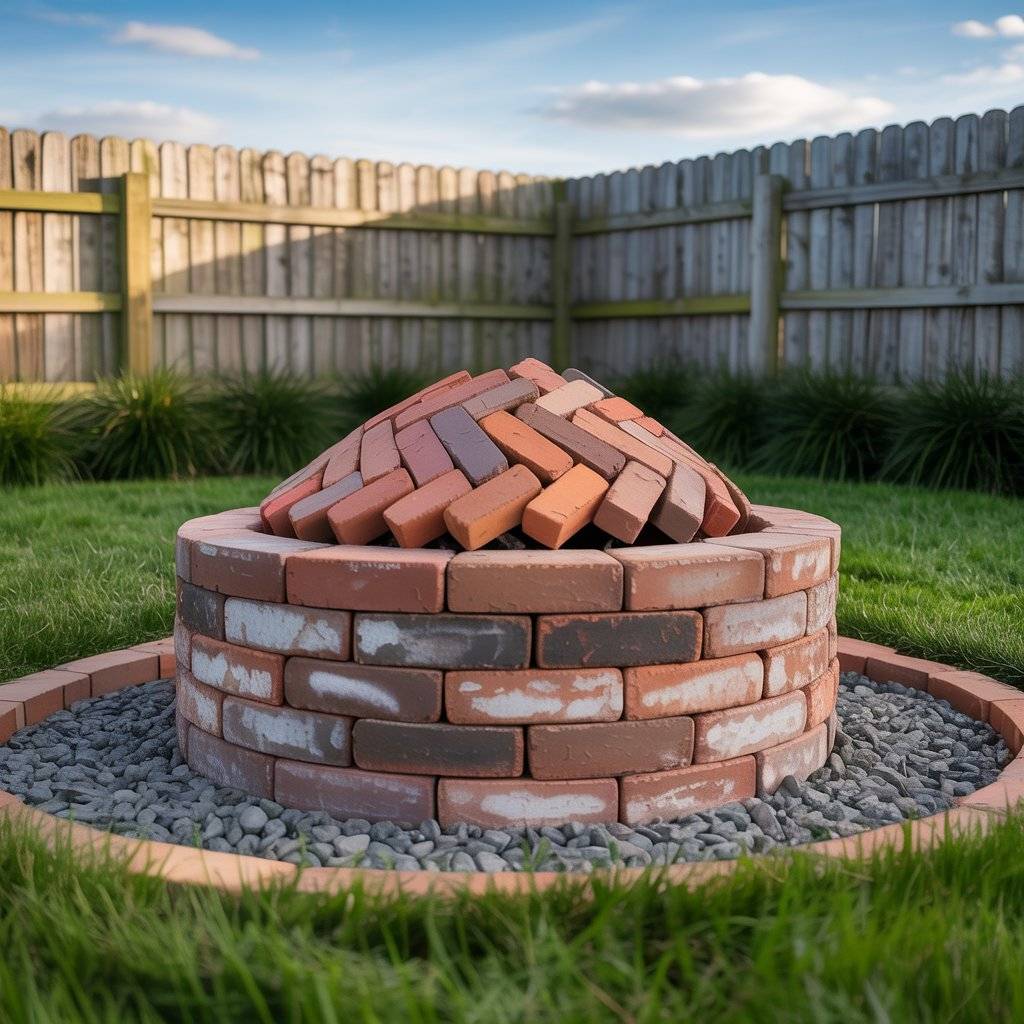
10. Fire Pit Made From a Steel Tractor Wheel Rim
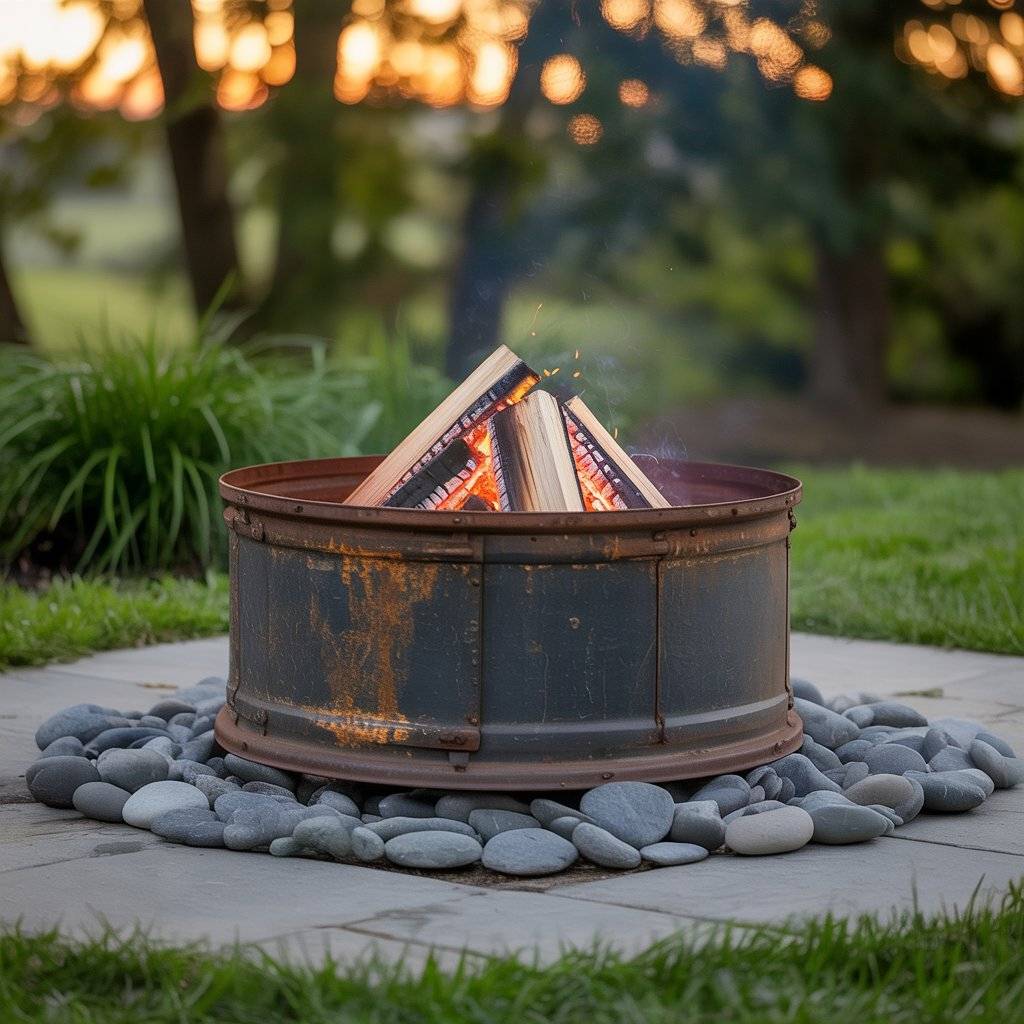
Steel rims from old tractor or large truck wheels make excellent fire pit bases. They’re durable, fire-safe, and already shaped for the job. Clean off rust, paint with heat-resistant paint, and add a gravel or stone base underneath.
These work well in rural or industrial-style yards. Add a ring of river rock around the outside for a finished look. It’s a simple project with a strong, grounded feel and a great way to repurpose heavy materials.
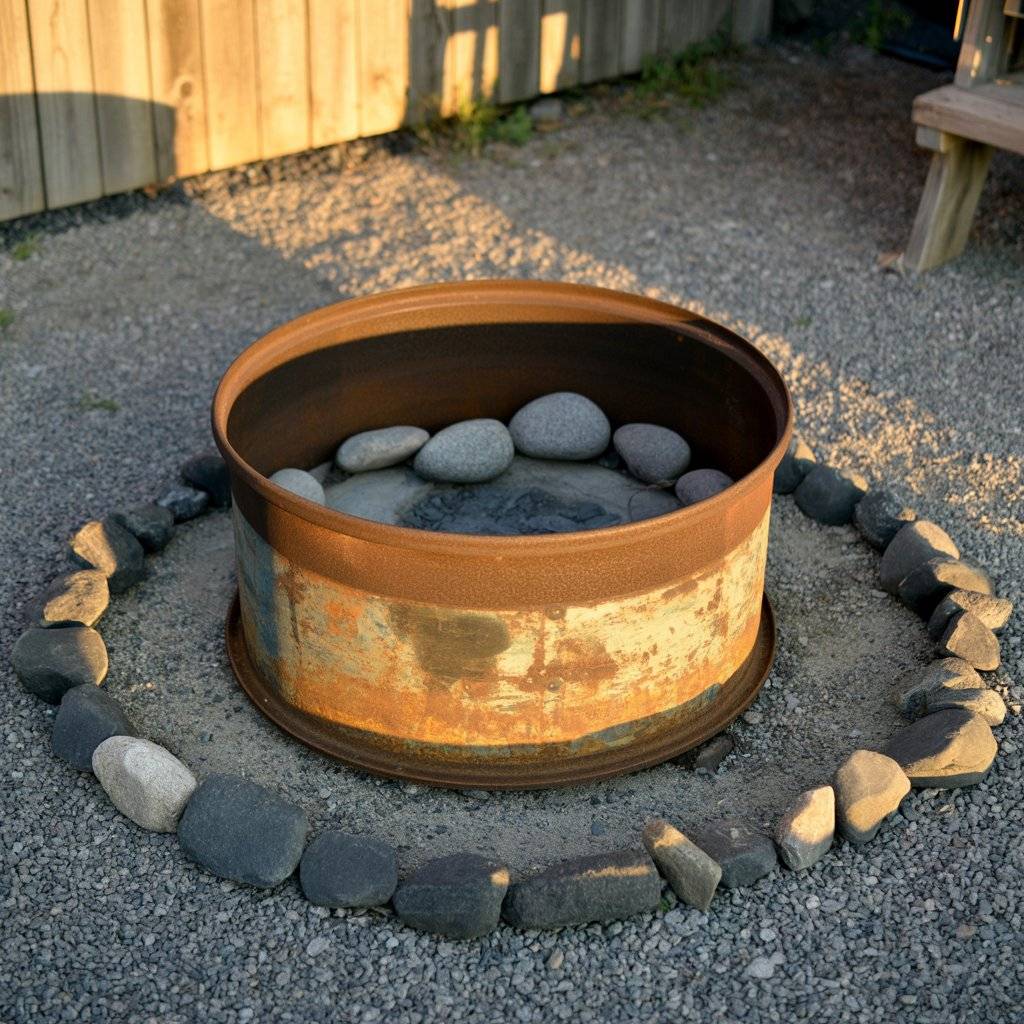
11. Portable Fire Pit on Wheels
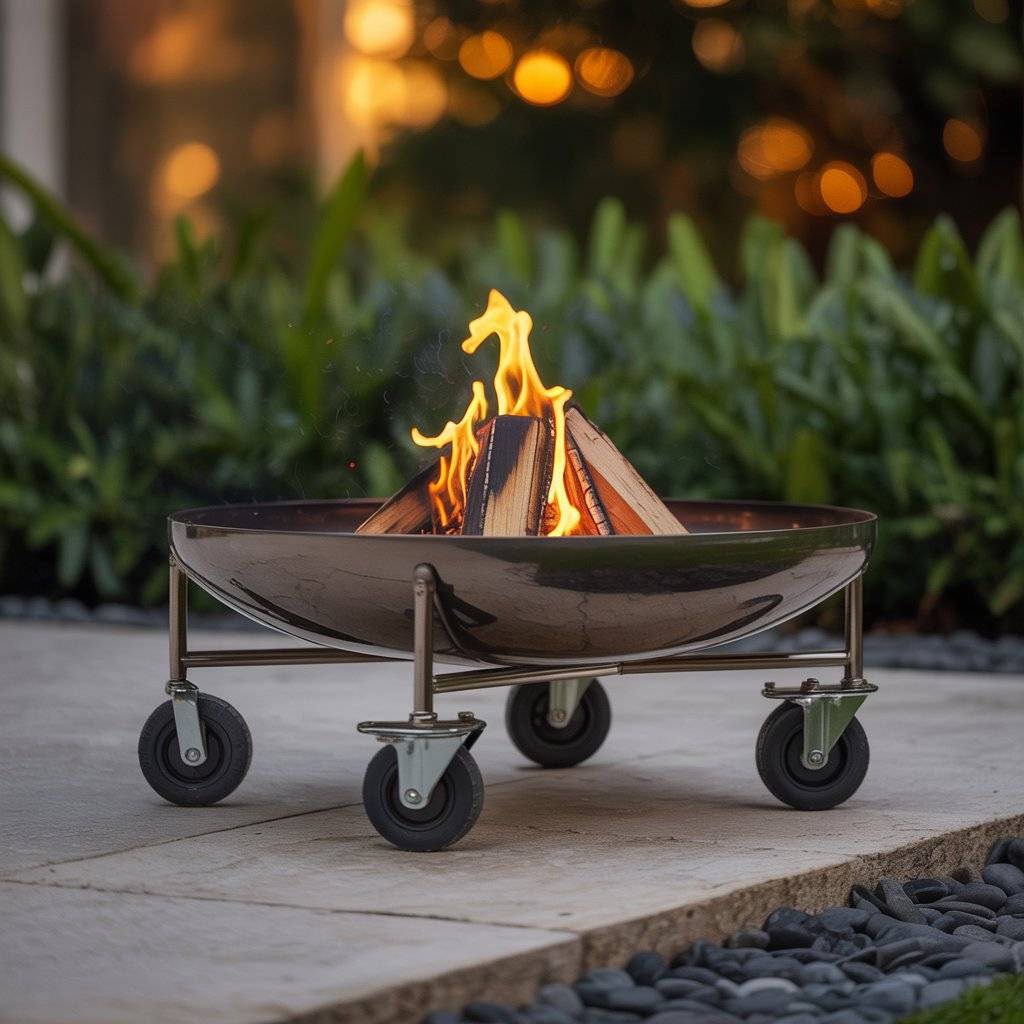
If you want flexibility, a fire pit on wheels is a smart DIY option. Use a metal fire bowl or barrel and attach it to a rolling base with locking caster wheels.
This lets you move it depending on the wind, space, or number of guests. Use a heavy-duty steel frame or a repurposed cart as your base. Add heat shields or fire bricks inside the bowl for safety.
This setup works well for small patios or renters who need a temporary solution. Just make sure the wheels are heat-resistant and lock in place when in use.
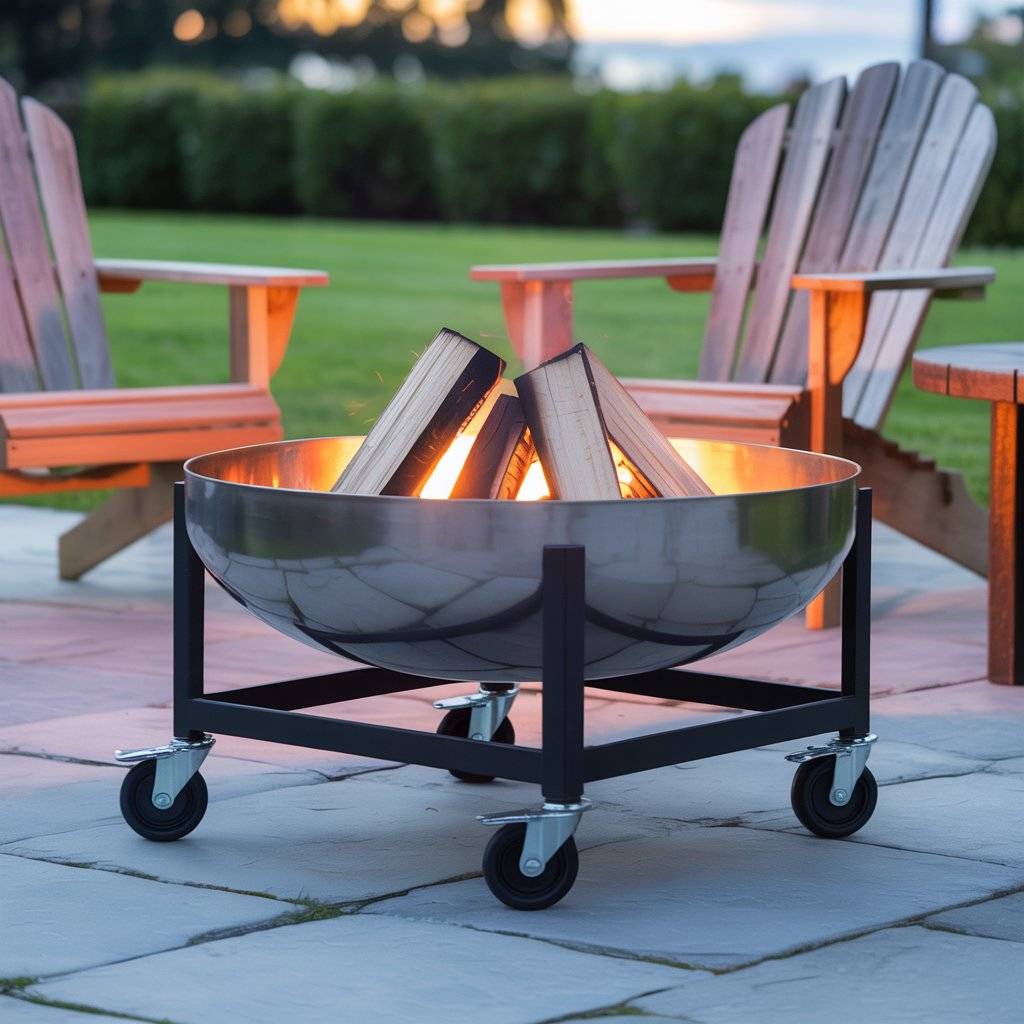
12. Square Concrete Fire Pit With Minimalist Look
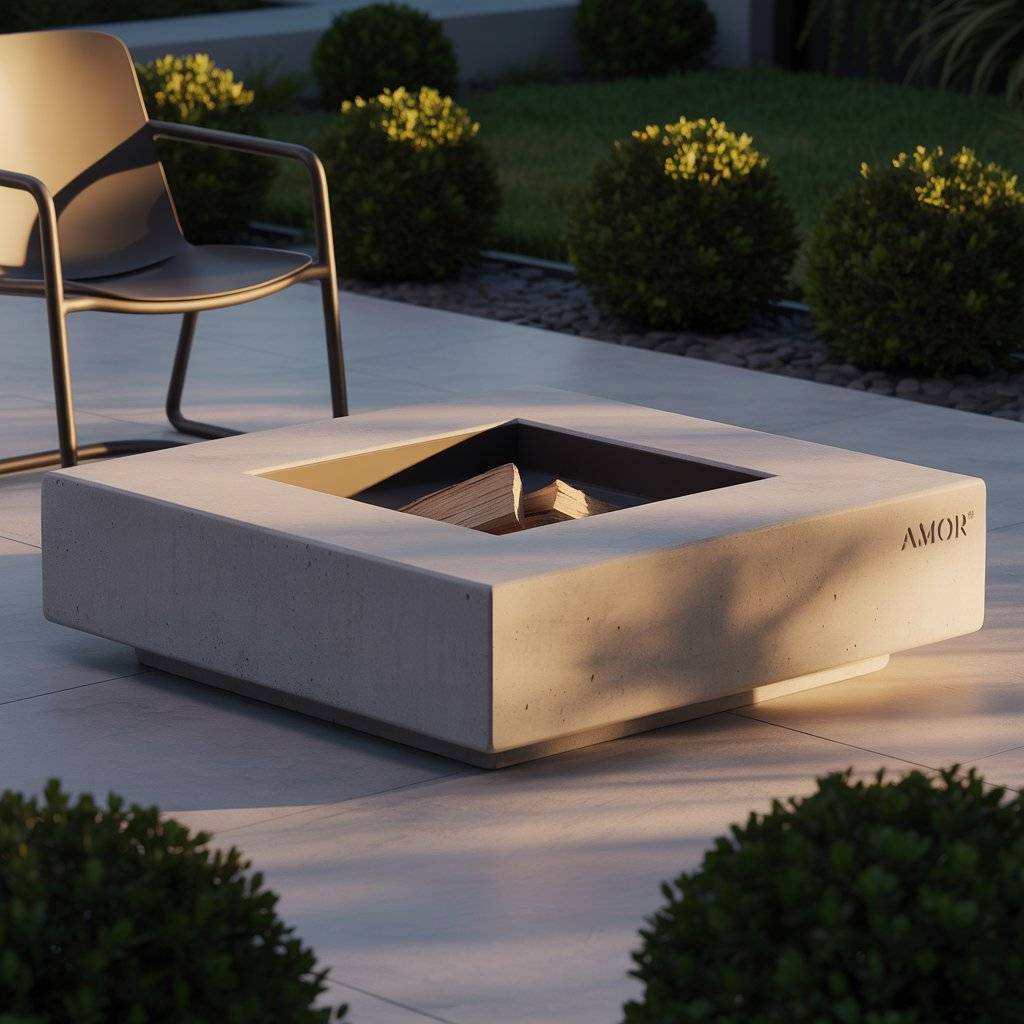
Concrete offers a clean, modern design that fits well with contemporary backyards. Using a simple wooden form and quick-set concrete mix, you can build a square or rectangular pit with clean edges.
Leave the interior hollow or insert a steel fire ring for function. Smooth the edges and stain or seal the surface if desired. This style pairs well with sleek furniture and gravel or paver patios. It’s a bit more labor-intensive but results in a polished, long-lasting centerpiece.
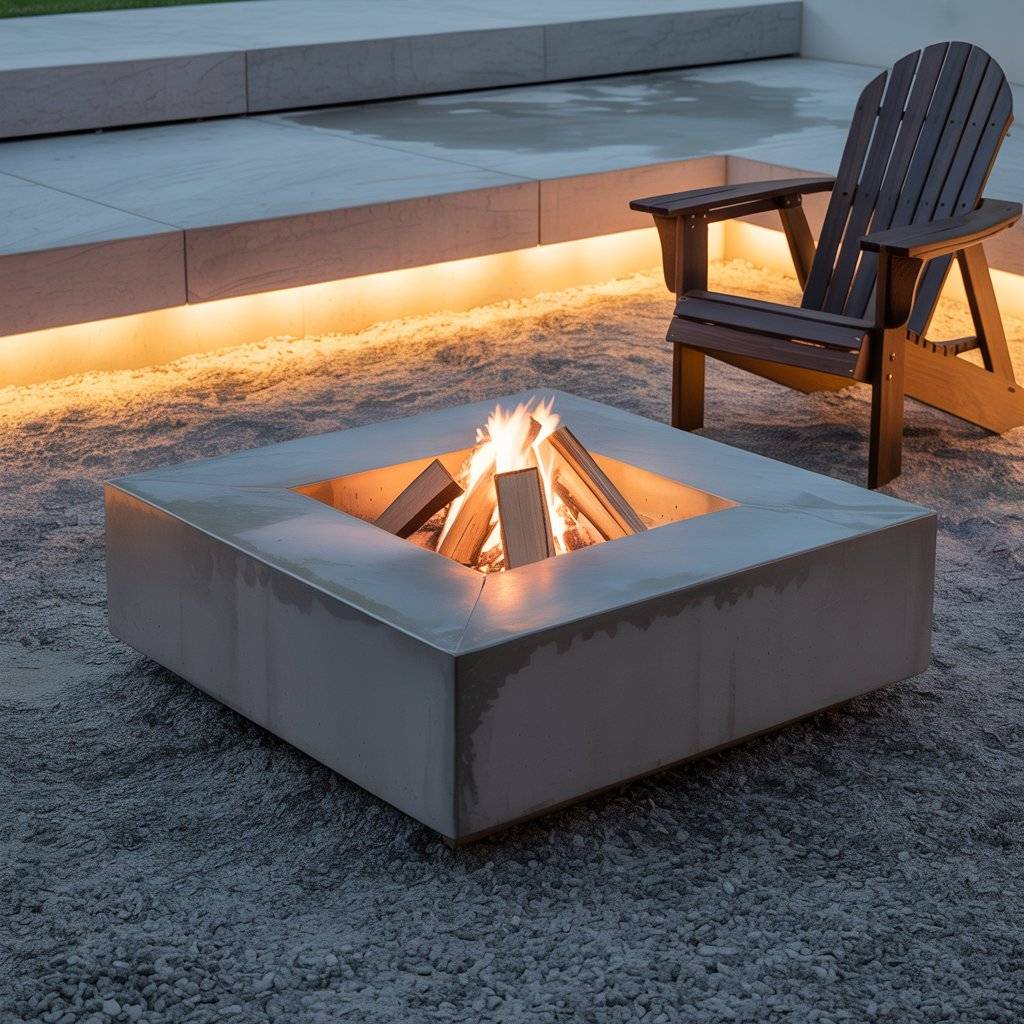
13. Gabion Fire Pit Using Rocks and Wire Baskets
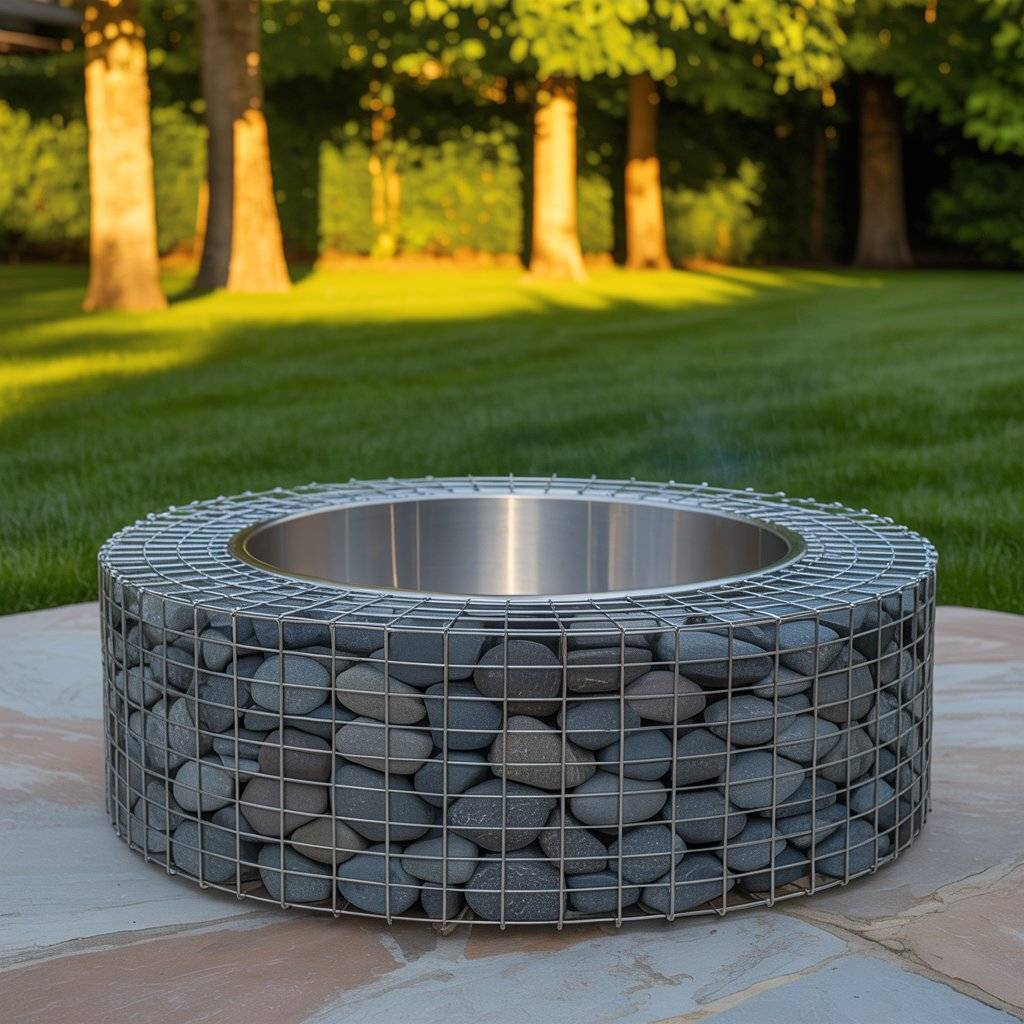
Gabions wire cages filled with rocks are usually used for retaining walls, but they also make excellent fire pit walls. Build a circular or square gabion basket using steel mesh or fencing, and then fill it with stones. Place a metal ring in the center as your fire pit liner.
This design is sturdy, visually striking, and great for windy areas. Choose river rock or crushed granite to control airflow and maintain a natural aesthetic. It’s unique, functional, and heavy enough to stay in place without cement.
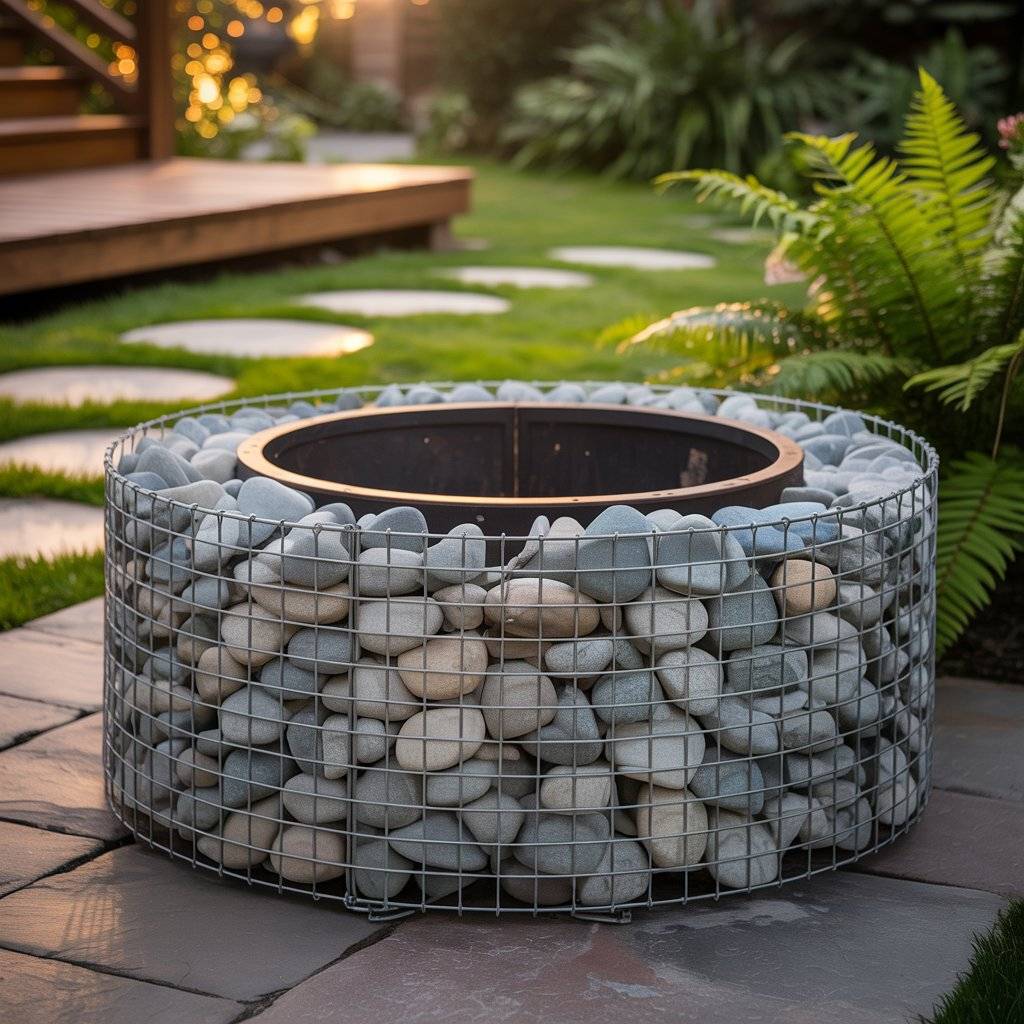
14. Fire Pit Made From Salvaged Patio Pavers
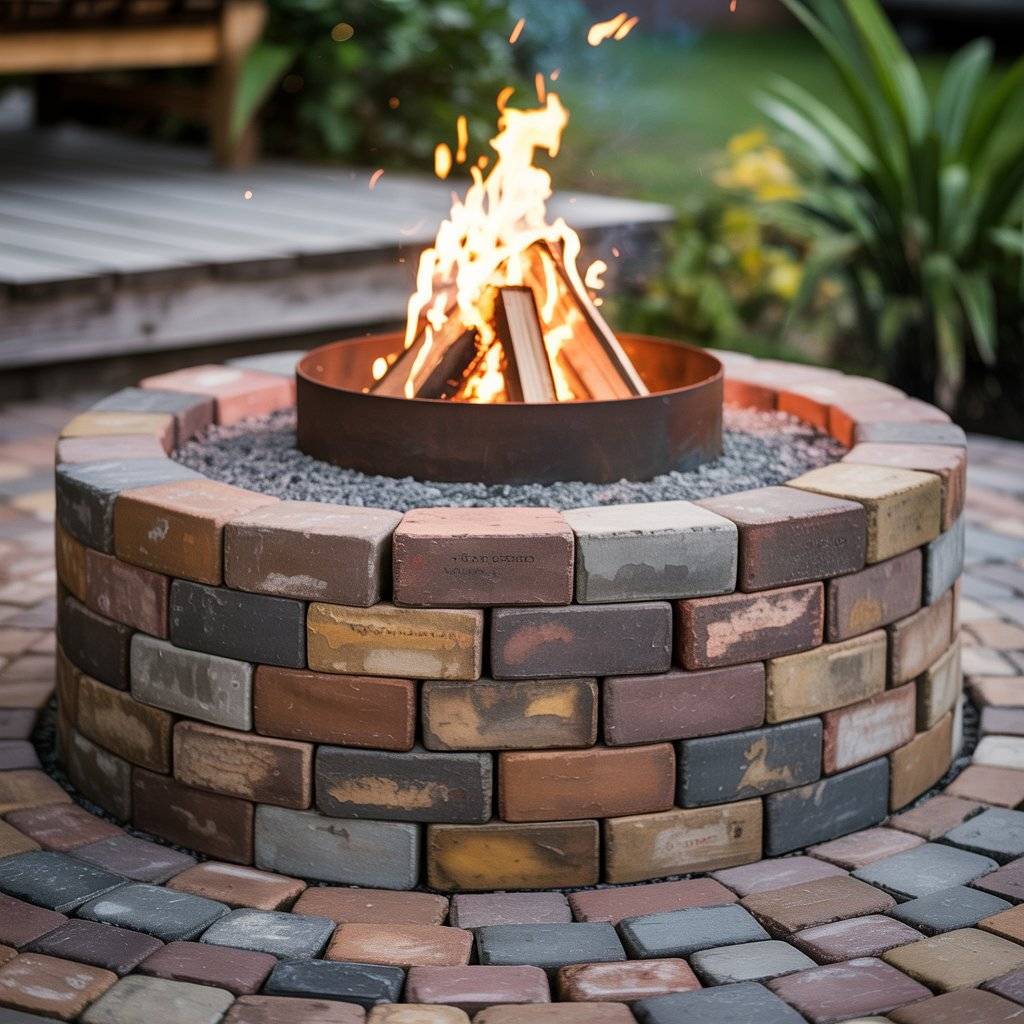
If you’ve redone a patio or know someone who has extra pavers, reuse them for a DIY fire pit. Lay them in a stacked pattern either round or square and secure with construction adhesive rated for high heat.
Add a gravel base and a steel insert to complete the setup. You can even use leftover bricks or slabs to build matching seating or side tables. This idea helps reduce waste while giving new life to old materials.
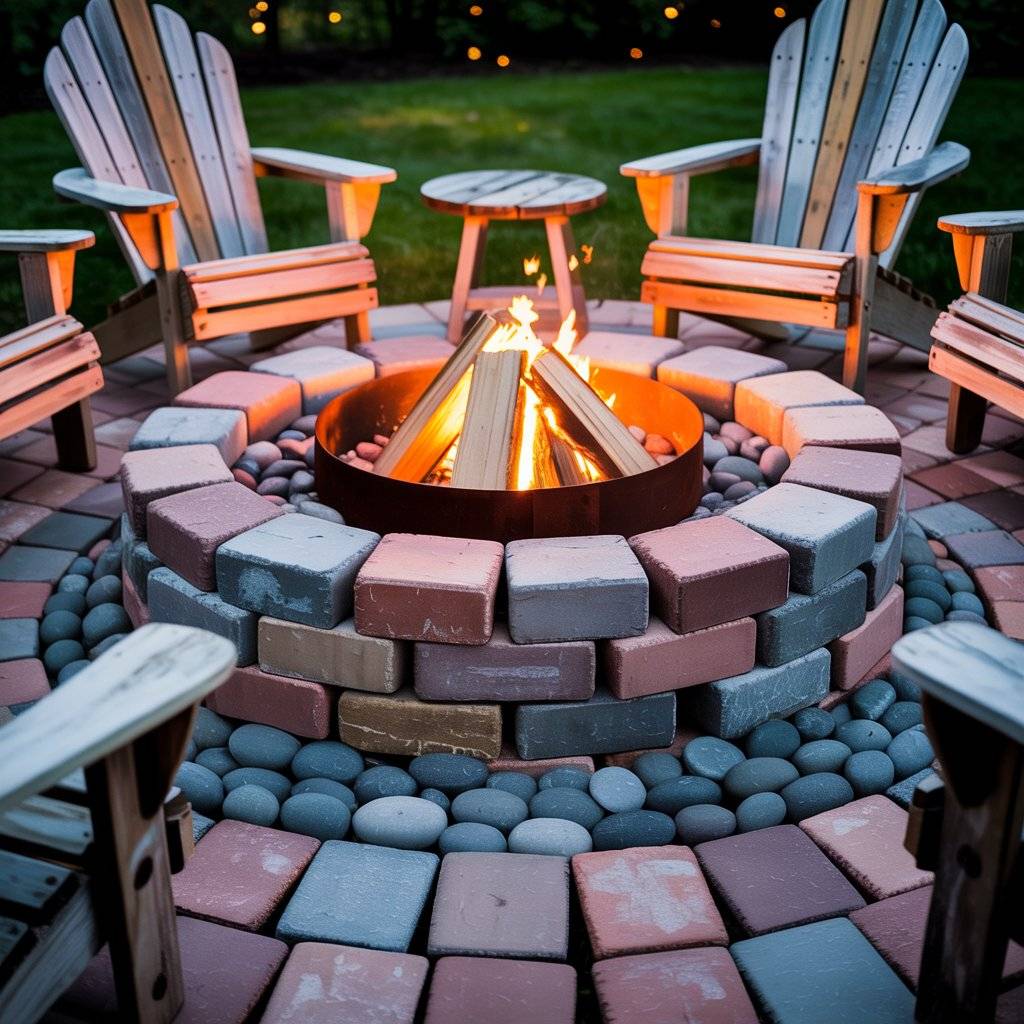
15. Modern Fire Pit With Landscape Edging and Pebbles
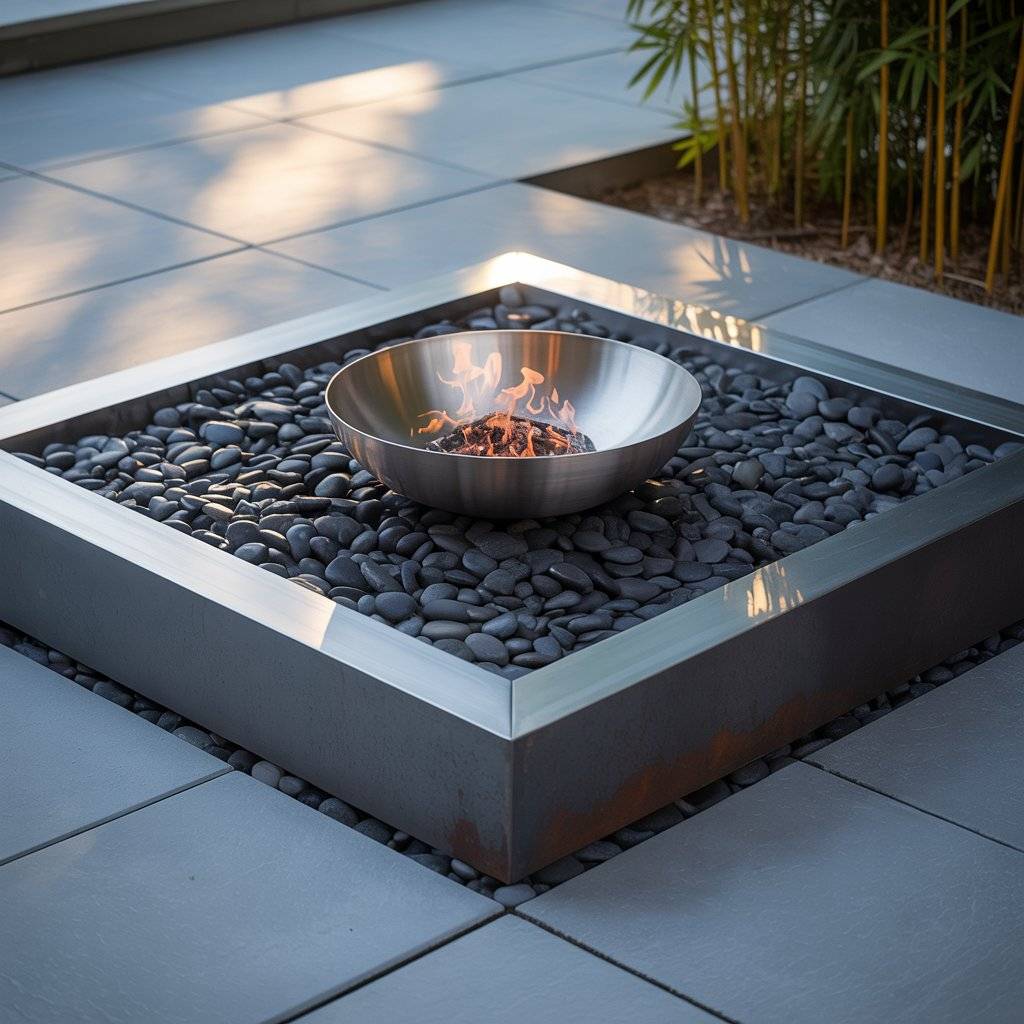
For a sleek, low-profile design, I suggest metal landscape edging to create a geometric shape like a square or hexagon. Fill the interior with heat-resistant pebbles and place a steel fire bowl in the center.
The edging helps define the space and keep stones in place. It also creates a clean border that looks great in minimalist or structured gardens. This pit design is especially effective in small yards or urban patios where space is limited but style still matters.
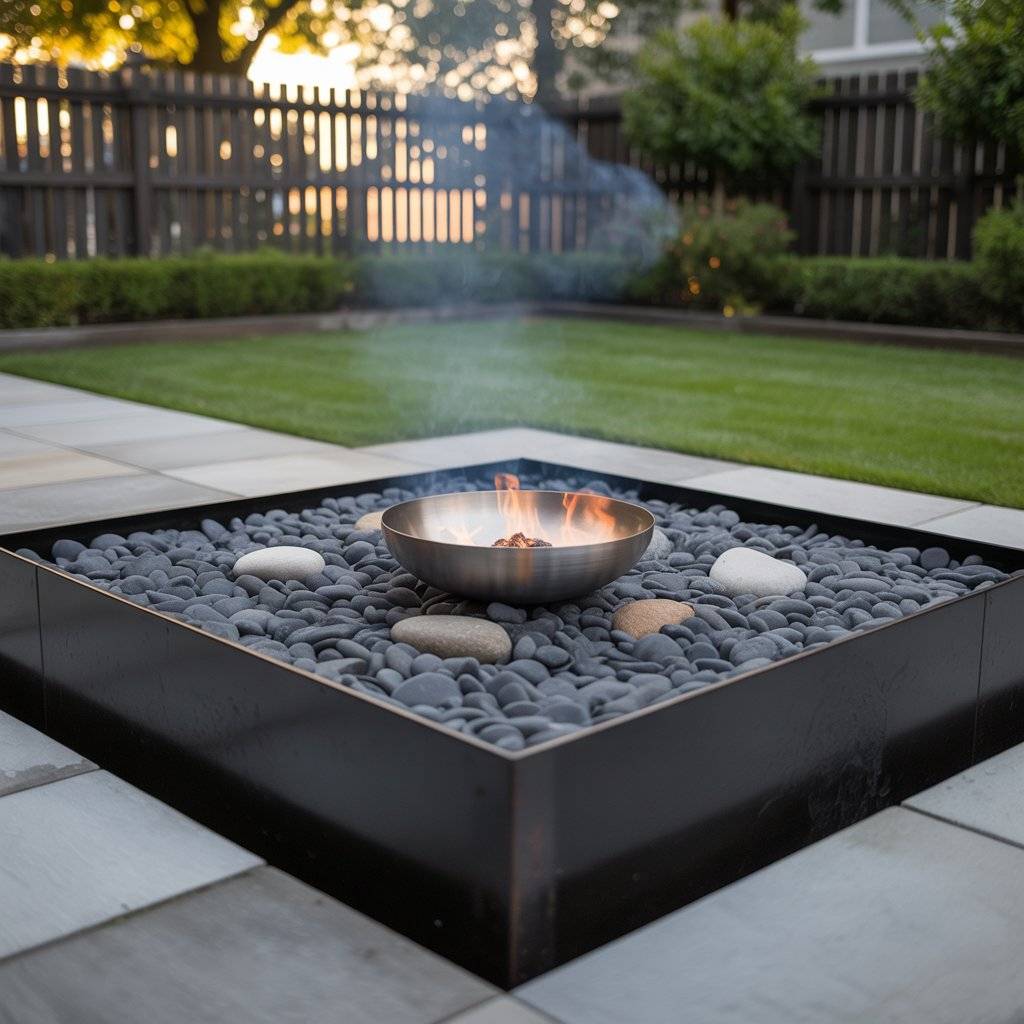
🔥 AFQs
1. Do I need a permit to build a fire pit in my backyard?
It depends on where you live. Many cities and counties have rules about open flames or how far a fire pit must be from structures, trees, or fences.
Always check with your local fire department or city planning office before starting any build. Even a small DIY fire pit may need to follow certain safety codes, especially in areas prone to wildfires.
2. What materials are safe to use for a DIY fire pit?
Use non-flammable, heat-resistant materials like fire bricks, natural stone, steel, concrete blocks, and gravel.
Avoid using regular bricks or cinderblocks that aren’t fire-rated they can crack or even explode under high heat. Always include a gravel or sand base to prevent heat from damaging the ground below.
3. Can I build a fire pit on a deck or patio?
Yes, but with caution. If you’re placing a fire pit on a wooden or composite deck, use a fireproof barrier underneath and around it.
Consider using a raised fire bowl or gas-powered option designed for deck use. On patios made of stone or concrete, you’ll have more flexibility, but always check for clearance and ventilation.
4. What’s the best type of fuel for a backyard fire pit?
Wood is the most common for traditional DIY fire pits and offers that classic crackle and smell. Hardwood like oak or hickory burns longer and hotter than softwoods.
If you prefer cleaner burns with less smoke, consider a gas fire pit setup though it requires a bit more planning and may not suit all DIY styles.
5. How do I maintain a DIY fire pit once it’s built?
Keep the pit clean by removing ash and debris after each use. Check for cracks or signs of wear in your materials, especially if you’re using stone or concrete.
If your pit includes metal parts, treat them with heat-resistant paint and cover them when not in use. During wet seasons, use a lid or tarp to prevent water damage and rust.
Why I Wrote This Article
✅ Share Fire Pit Projects That Real People Can Build
Many fire pit designs online look beautiful but feel out of reach. This article offers ideas that don’t require special skills, big tools, or a huge budget.
✅ Encourage More Backyard Use With Simple Builds
When outdoor spaces are inviting, people use them more. A basic fire pit can help create a space you actually want to spend time in, even without a big renovation.
✅ Offer Options That Fit Different Styles and Spaces
Whether your backyard is a small city deck or a wide grassy area, these ideas show that there’s no one right way to build a fire pit. There’s something here for every type of space.
✅ Promote Upcycling and Affordable Materials
Several of these ideas reuse items like old washing machine drums, pavers, or steel rims making them good for your wallet and for reducing waste.
✅ Break Down the Process Into Manageable Projects
Building a fire pit doesn’t have to feel like a big, scary task. Most of these can be done over a weekend or even in a single afternoon, especially with help.
✅ Showcase Practical Ideas I’d Use Myself
Every project on this list is something I’d feel comfortable building in my own backyard no fluff or filler, just options that work.
Final Thoughts
You don’t need a designer’s blueprint or a contractor to make your backyard better just a little time, some simple materials, and an idea that fits your space. A fire pit gives you a reason to head outside and enjoy the evening whether it’s roasting marshmallows, reading a book by the fire, or just sitting with friends as the sun goes down.
Here’s your next step:
Choose one of these ideas that feels right for your space. Start small if you need to even placing a bowl on a gravel patch is a real improvement. Once you get started, you’ll see how one change can shift how you use your whole yard.
And if you ever find yourself out there, coffee in hand, poking at the fire just because that’s when you know it worked.
Related Post
- Back to School Made Easy: 18 Essential Products to Buy on Amazon - December 31, 2025
- 25 Things You Can Make and Sell This Year for Extra Income - December 31, 2025
- DIY Dog Corner Makeovers Using Pallets, Crates & Budget Friendly Decor - December 30, 2025

